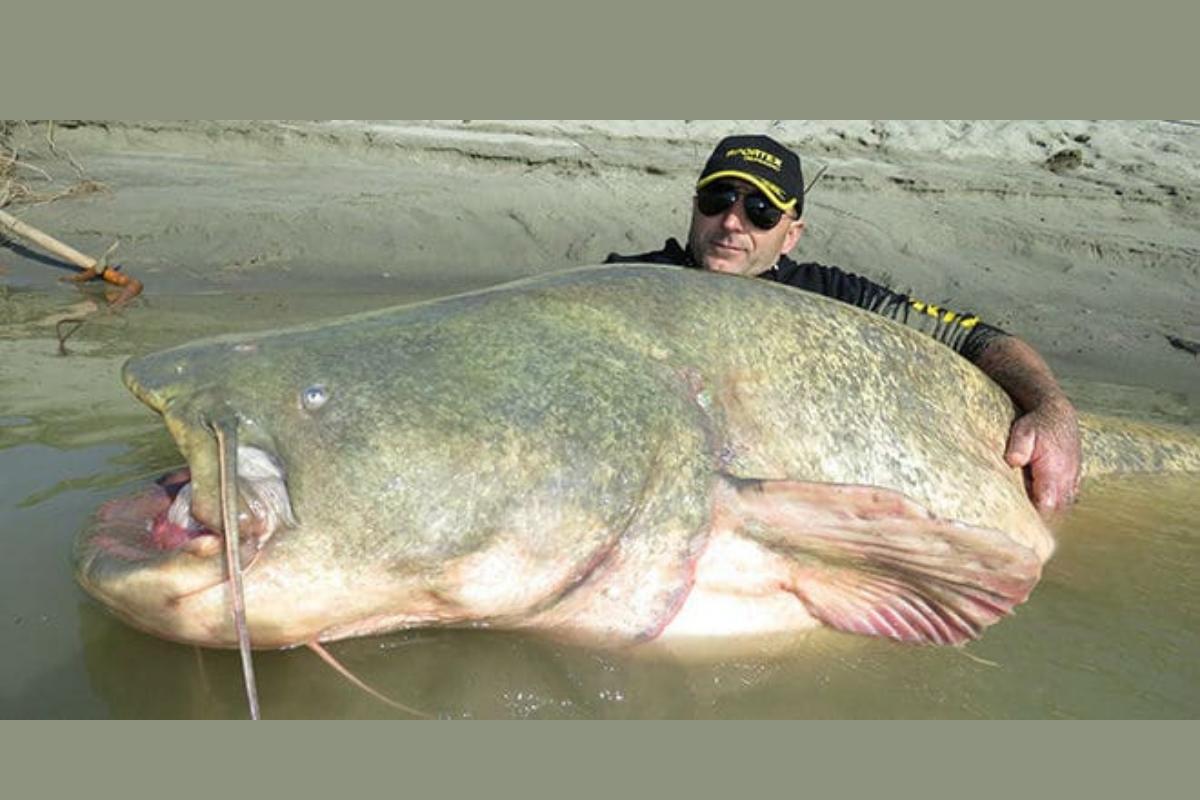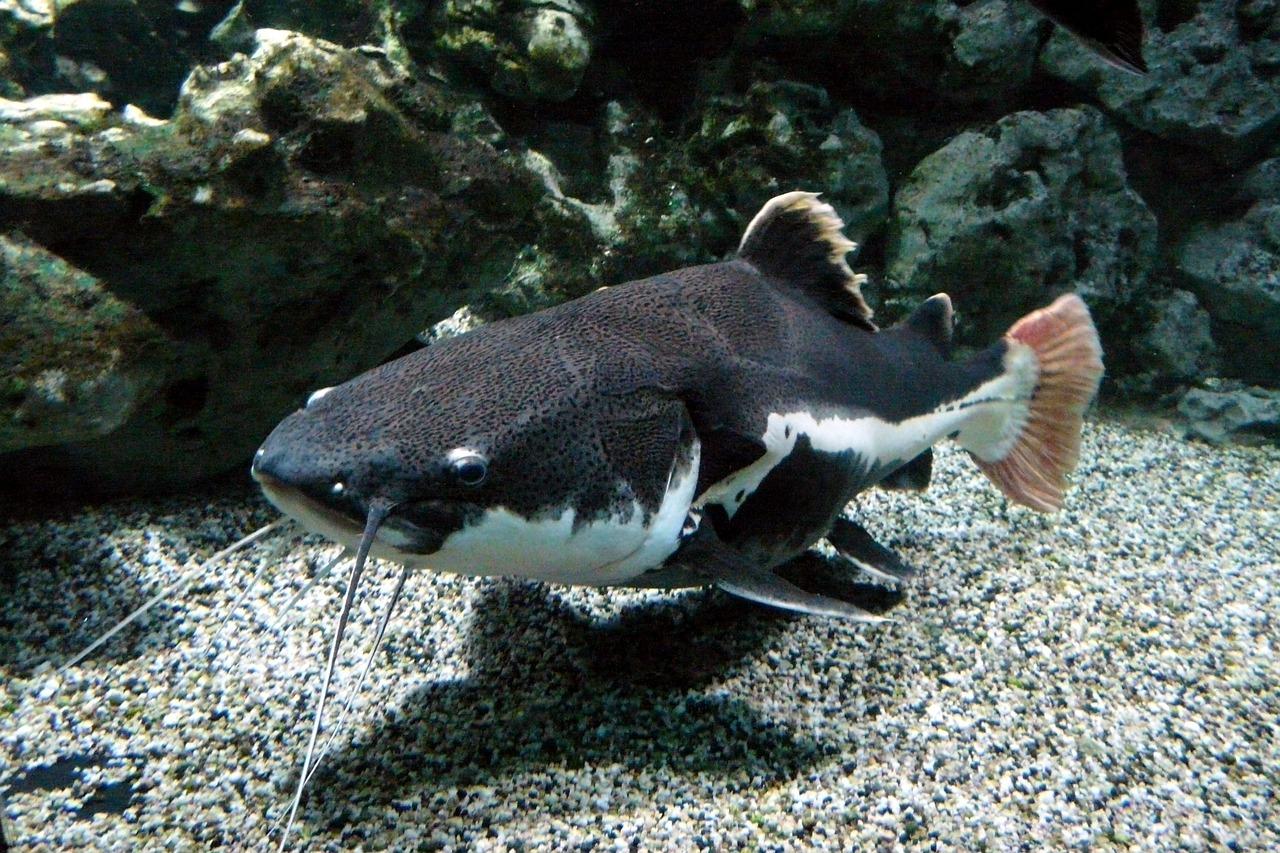Are Catfish Dangerous to Humans?


The danger catfish pose to humans depends on the individual species, something which varies greatly. This is partly due to the vast amount of different catfish species we can find. All within the order Siluriformes, there are around 36 families of catfish containing over 3,000 individual catfish species. The wels catfish is a catfish originating in Europe which holds the record for the largest freshwater fish. Some catfish species are tiny, measuring not much longer than an inch in length. Whether catfish are dangerous to humans depends not only on their size, but whether they contain poison.
At AnimalWised, we learn more about these freshwater fish by asking are catfish dangerous to humans? We find out whether they are poisonous, whether their whiskers pose any danger and much more.
What are catfish?
As stated in the introduction, catfish are freshwater fish which make up the order Siluriformes. They are known as catfish due to their characteristic whiskers on their face, appendages known as barbels which are used for sensory perception. These fish are considered omnivorous, although their diet will vary according to species.
Another characteristics feature of catfish is their lack of scales. Some species have external protection known as scutes, bony plates which are the same as appear on various species of reptile and other animals. Most have a thin mucus lining on their skin which gives them a slimy feel when they are touched. Some species use this to aid in cutaneous respiration, meaning some catfish are animals that can breathe through their skin.
Their size is of particular note, something which has led them to becoming a type of big-game fish. The largest freshwater fish ever caught is thought to be a nearly nine feet long Mekong giant catfish (Pangasianodon gigas) which was about the size of a grizzly bear[1]. Some fishing authorities have introduced catfish into various rivers and lakes for sport. This is the case with the wels catfish (Silurus glanis) in some countries.
Most catfish are considered bottom feeders. They travel the floor of their freshwater ecosystem and snap up any food they can rummage. They are aided in this endeavor by barbels, appendages on their face which look like whiskers. Although not the same, they are similar to cat whiskers in that they are used for sensory perception. While scanning the bottom, they can sense taste and movement to catch their prey.
What do catfish eat?
As an omnivorous animal species, the catfish has an incredibly varied diet. They can eat almost anything, but this will depend on their size and the potential food available to them. Generally speaking, catfish can eat other fish, frogs, insects, mollusks and even some algae and plant life.
Some catfish are even known to eat small mammals and birds, especially the wels catfish. This European catfish has been known to breach the water to catch pigeons on the shore[2]. Some catfish are considered parasitic since they feed off blood of their hosts after attaching to them for long periods.
Since this article questions whether catfish are dangerous to humans, you may wonder if they can eat people. There are many myths and legends suggesting catfish have eaten humans, but no evidence exists to confirm this. Despite their very large size, they are not interested in attacking people, unless it is a form of self-defense. For many species of catfish, their only real predator is humans.

Are catfish dangerous to eat?
Now we know more about what catfish eat, we may be interested in using catfish as food. As with many different freshwater species, many catfish are used as food. While some catfish are hunted for sport rather than food, many cuisines across the world incorporate catfish in their diet. Although all catfish species are edible, not all are particularly appetizing. The most commonly eaten catfish in the United States are channel catfish (Ictalurus punctatus), blue catfish (Ictalurus furcatus) and flathead catfish (Pylodictis olivaris).
There is a concern with eating some catfish. This is because catfish often exhibit bioaccumulation. This means they can slowly accumulate hazardous substances in their organism. This is the case with catfish which swim in polluted waters. The meat from the catfish is not naturally poisonous, but it can be poisoned by environmental pollutants. For this reason, anyone fishing catfish needs to ensure it is safe to do so with the local authority.
Learn more about catfish with our article on different types of freshwater fish.
Can catfish attack humans?
As stated above, catfish do not consider humans prey. They do not have the right anatomy to prey on humans, even if they can cause damage when given the opportunity. This does not mean catfish never attack humans.
Most cases of catfish attacking humans is due to self-defense. Catfish are considered a game fish, meaning humans hunt them for sport. Some people catch them by noodling. This is the catching of catfish by hand, something which is possible because catfish often dig into the ground of the waterbed. Noodlers grab the fish, often by inserting their hand into the catfish's mouth and using this as leverage to pull them out of the water.
Noodling is a dangerous pastime, but this is not usually due to the catfish themselves. Instead, noodlers can get caught on objects underwater and drown or accidentally rustle a predator such as an alligator. In these cases, the catfish is usually trying to defend their fry from other predators, not attack humans.
Some smaller catfish species are known to attack humans. These include those from the genus Vandellia. Known as candiru, these small catfish are parasitic and feed from the gills of larger fish. There are some reports of these fish swimming into the urethra of humans to live as parasites, but these have little evidence or are entirely fictitious[3].
The harm these types of catfish can cause largely stems from their sharp teeth. While these teeth are used to hold onto their host, they can bite opportunistically if a human is in the water. Candiru are also known to feed on corpses which float into their habitat. While the bite from this catfish can be painful, it is not fatal and no one has died as a result of being attacked.

Are catfish poisonous?
We have already explained that catfish meat can be poisonous if it contains environmental pollutants. However, many people may wonder if catfish are venomous in themselves.
While not common to all catfish species, many catfish have spines on their fins which can ‘sting’ someone when in close enough range. These are not stings like a bee or scorpion, but rather the sharp spines on their fins can puncture the skin of a human and they are envenomated this way.
Most catfish are not considered venomous, but some catfish species which do contain venom and which can cause harm to humans. This is the case with the striped-eel catfish (Plotosus lineatus) which has a highly venomous spine on their first doral and pectoral fins. There may be great pain, but the effects are not fatal in most cases. Some fatalities have been reported[4].
In most cases, the catfish will not harm the human. Most larger catfish have dull spines which will not easily pierce the skin. Smaller catfish like the striped-ell catfish are more dangerous since their spines are sharp as needles. The skin toxin and fin venom can cause edema and have hemolytic effects[5]. The danger is often due to the toxins leading to secondary complications such as gangrene, so thorough cleaning of a catfish wound is essential.
Are catfish whiskers dangerous?
The barbels are distinct features on catfish which look like whiskers coming from their mouth. Although some may think they are the part of a catfish which is dangerous, this is not the case. They are sensory organs which are not used for attack or defense, but to glean information from their environment. The only part of the catfish which is capable of envenomation is the spines on their fins, although only in certain species.

If you want to read similar articles to Are Catfish Dangerous to Humans?, we recommend you visit our Facts about the animal kingdom category.
1. Owen, J. (2005). Grizzly Bear-Size Catfish Caught in Thailand. Retrieved from:
https://www.nationalgeographic.com/animals/article/thailand-giant-catfish-animals
2. Cucherousset, J., Boulêtreau, S., Azémar, F., Compin, A., Guillaume, M., & Santoul, F. (2012). “Freshwater Killer Whales”: Beaching Behavior of an Alien Fish to Hunt Land Birds, PloS one, 7(12). e50840.
https://doi.org/10.1371/journal.pone.0050840
3. Haddad Junior, V., Zuanon, J., & Sazima, I. (2021). Medical importance of candiru catfishes in Brazil: A brief essay. Revista da Sociedade Brasileira de Medicina Tropical, 54, e0540–e2020.
https://doi.org/10.1590/0037-8682-0540-2020
4. Bentur, Y., Altunin, S., Levdov, I., Golani, D., Spanier, E., Edelist, D., & Lurie, Y. (2018). The clinical effects of the venomous Lessepsian migrant fish Plotosus lineatus (Thunberg, 1787) in the Southeastern Mediterranean Sea. Clinical toxicology (Philadelphia, Pa.), 56(5), 327–331. https://doi.org/10.1080/15563650.2017.1386308
5. Mann, J. W., 3rd, & Werntz, J. R. (1991). Catfish stings to the hand. The Journal of hand surgery, 16(2), 318–321.
https://doi.org/10.1016/s0363-5023(10)80119-4







